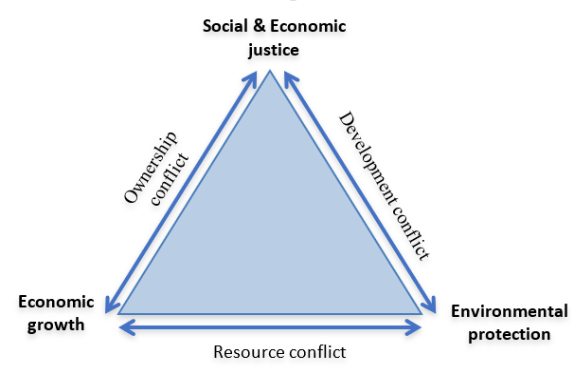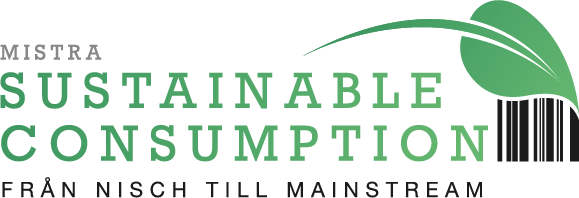
Tourism and sustainable development
As charter and mass tourism grew markedly during the 50s and 60s, tourism began to have a greater impact on countries and at different destinations. It was also at these destinations that a more critical perspective on tourism started to take shape. Negative impacts, like over exploitation of coastal areas, littering, and the strain on local populations, became apparent. Several examples of the first destinations to be exploited in this way in Europe are found along the Mediterranean Sea (such as Mallorca and southern Spain), but also in the Caribbean.
The concept of sustainable development took hold in the following decades and also fed into the outlook on tourism development. Businesses, tourists, locals and public bodies; today all ask themselves how a more sustainable tourism development should appear taking into account economic, social, cultural and environmental aspects. One result is the growth of new types of tourism like eco-tourism, pro-poor tourism, responsible tourism, volunteer tourism and community-based tourism. Different kinds of tourism that try to minimise the negative impact on the environment and local communities.
Sustainability has been criticised for being a concept that is far too abstract. How can it actually be operationalised? When is something sustainable? The same challenges exist within the tourism industry. There are several definitions and interpretations of the concept. A UN led initiative, which involves parts of the industry and other institutions, has established a number of criteria. To be a supplier of sustainable tourism you should:
- Maximise the social and economic benefits for the local community and minimise the negative impact.
- Maximise the benefits for cultural heritage and minimise the negative impact.
- Maximise the benefits for the environment and minimise the negative impact.
- Demonstrate an effective sustainable leadership.
Taking social, economic, cultural and environmental considerations into account is extremely complex. The figure below illustrates potential conflicts, from the point of view of sustainability, that can arise in communities promoting tourism development. Conflicts make efforts to operate more sustainably difficult for the actors involved, like local authorities, tourism entrepreneurs, locals and tourists. The illustration helps us understand conflicts that have recently occurred between different actors in Barcelona, Venice and Amsterdam (such as demonstrations, and attacks on tourists). Regarding Barcelona it’s a clear case of ownership conflict, where tourism entrepreneurs on the one hand are aiming for long term economic growth whilst the local population want access to accommodation that isn’t too expensive and is peaceful and safe.

Those who have studied the development of sustainable tourism have seen examples of the conflicts that arise, and how different interpretations of the concept of sustainability matter greatly to which direction the development takes. Tourism businesses often have an activity-based or introspective view of sustainable development. This means that it’s never a question of whether tourism should exist or not, but instead how tourism can be the motor driving the development of local societies. Often tourism is seen in isolation from other activities happening in the community.
Associations and public bodies (often with an environmental focus) usually put a place’s resources first. It could be natural resources or cultural heritage that need to be protected. This strategy, in relation to tourism development, often focuses therefore on setting limits on the number of visitors (for example to national parks) or limiting the damage to resources in other ways. This way of thinking has been criticised for being static, and not taking into account what those living in the area want. The latter has in recent years become all the more important, i.e. beginning with the local community and its inhabitants’ needs and wishes. This interpretation of sustainable tourism (unlike the activity based perspective) means that tourism in itself is not self evident but should be negotiated taking into account the other types of activities there are in the local community.
So we can clearly see that trying to get tourism development to take a more sustainable direction is a complex issue and a great challenge. It demands the involvement of different stakeholders who are affected on a local, national and international level. In the sections on economic impacts, social and cultural impacts and climate and environmental impacts more specific challenges and possibilities to do with tourism are described.
Sources
Campbell, S. (1996). Green cities, growing cities, just cities?: Urban planning and the contradictions of sustainable development. Journal of the American Planning Association, 62(3), 296-312.
Hunt, E. (2017, August 4). “Tourism kills neighbourhoods”: how do we save cities from the city break? The Guardian. Hämtad från http://www.theguardian.com
Lundberg, E. (2014). Tourism Impacts and Sustainable Development. Gothenburg: University of Gothenburg.
Mowforth, M., & Munt, I. (2015). Tourism and sustainability: Development, globalisation and new tourism in the third world. Routledge: London.
Saarinen, J. (2006). Traditions of sustainability in tourism studies. Annals of Tourism Research, 33(4), 1121-1140.










